Katji
Major Contributor
- Joined
- Sep 26, 2017
- Messages
- 2,990
- Likes
- 2,273
Yes, and not phone. [I've seen that sometimes.]
Cinch? Sounds like locking RCA.
Yes, and not phone. [I've seen that sometimes.]
When presented with the choice between optical and USB, for a two-channel system, I always choose optical for powered monitors.
I suppose that is another consideration, but mine is basically to eliminate noise coming from a source that will travel down a metal wire. Especially if using a PC. You could always do optical out from the source, to a DAC of your choice, then to the speakers.Interesting. Any good reason? I see people saying online that the optical input on this will also be using the internal dac in the speaker. So in that case, there should be no difference? Or am I wrong?
That's a good point, between USB and Toslink, but if I'm not wrong @Phoney wanted to know if it's better to use USB/Toslink or D10s (USB to PC) to speakers via RCA, and so using the D10s DAC instead of the speakers built-in DAC.I suppose that is another consideration, but mine is basically to eliminate noise coming from a source that will travel down a metal wire. Especially if using a PC. You could always do optical out from the source, to a DAC of your choice, then to the speakers.
Sorry for the lack of information.
I meant either PC --> USB --> speaker
or
PC --> USB --> Topping D10s --> Toslink -->speaker
If just using USB will most likely give the same results, I can just try to sell the Topping D10s. I saw someone say that the Optical input will use the internal DAC, so I guess that the D10s brigde sends out a digital signal through Toslink and not an analog signal. I didn't realise that.
Totally correct and I'll be really surprised if he hears a difference, assuming a properly level matched blind test.OK, so in both cases above, you are using the speaker internal DAC. Unless there's a faulty thing in the path, it should sound the same
The third path I was talking about is the one that makes use of the D10s DAC instead of the speaker internal DAC:
PC --> USB --> Topping D10s --> RCA -->speaker
Compare this one to the other two, and if you don't hear a difference (better sound), you can just sell the D10s and use PC --> USB --> speaker
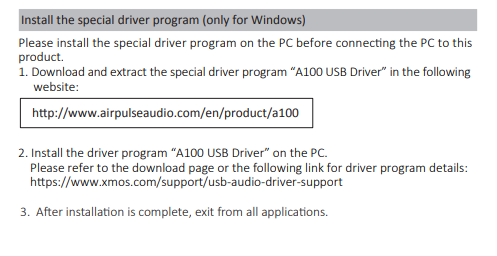
Interesting. Any good reason? I see people saying online that the optical input on this will also be using the internal dac in the speaker. So in that case, there should be no difference? Or am I wrong?
In the manual it says this:

But when I try to open the zip folder, I just get this:
"Windows can’t open this folder. The compressed is void."
When I try to unzip it, I just get this message:
"The zipped files are empty. You have to copy files to the zipped folder before you can unzip all the files."
I use windows 10. Can anyone try to install this driver to see if they get the same message? The folder says XMOS_audio_driver. You can find the driver for the A100 here:
https://airpulse.com/en/service
Also, do I need this special driver? Because I did try to just plug in the USB normally and my pc automatically installed some kind of driver. They sounded good, but there was some kind of weird whining sound coming from them both when music was played on Roon (Qobuz) using USB (didn't test spotify). It mainly happened with bass heavy songs, atleast where it was the most audible, and it amplified with certain notes. I'm not sure if that can happen because I'm not being able to use the special driver.
My friend install the USB drivers : http://cdn.ventmere.com/airpulse/uploads/2018-08/XMOS_audio_driver_rJqQuI7LX.zip
Use Winrar, it is your PC problem / Windows 10, not the speakers.
It works fine here !
The USB driver also allows for 24 bit 192 kHz !
The are different sound adjustments for each cable/input.
It works with all Windows the driver.I downloaded it in another way after emailing them! Does this driver work for windows 11 aswell? Seems to.
It works with all Windows the driver.
If you want to keep your Airpulse A100 for 20 years, after you use it, you should close it from the button on the back (while it is opened - and you see the white led in front), not from remote, that way no electrical current will pass through it in standby mode ( it consumes 0.5W in standby ). When you re-open it from the back it will auto-come back to its USB mode (it remembers).
That way the capacitors and other components that have limited lifespan will not be used when you do not use the speakers !
I also recommend to keep the speakers at 0 treble and 0 bass adjustments (audiophile setting) because it is very correctly tunned at those values to show the music in the original form.
If you want a proper subwoofer for it - depending where you are - look for a SVS PB 2000 PRO that reaches 17 Hz at -3db so it should reach 20 Hz no problem. Connect the Airpulse A100 to the subwoofer with the LFE connection and try 80 Hz crossover and volume 15-20% on the sub-woofer.
The PB-2000 PRO has low distortions compared to PB-1000 PRO.

SVS PB-1000 Pro and SB-1000 Pro Subwoofers Review
SVS has totally redesigned their entry-level powered subwoofers in the PB-1000 Pro and SB-1000 Pro. Our review reveals these subs go well beyond entry-level performance. Read on to find out how.www.audioholics.com

SVS PB-2000 Pro Ported Subwoofer Review
SVS completely revamped their 2000 series with the release of their 2000 Pro subwoofers. We can report that the 2000 Pro subs are far more improved than just adding a smartphone app. Read on.www.audioholics.com
Hello there,
First of all let me bring some enlightenment to this discussion. Phil Jones is a great engineer. Here - why he likes to use small woofers :
These speakers are really really fantastic good in sound quality.
I appreciate empirical evidence too but let me tell you that quality components and the sound they produce is what matters in the end.
Some technical measurements can be taken out of context and will provide an incorrect picture. Moreover flat speakers do not sound the best for human ears, and that is why headphones with harman kardon curve for example may sound better than flat ones.
Some information translated (read):

AirPulse原廠專訪(一)
2019年10月中旬,就在大陸十一長假結束後,我和U-Headphone主編蔡承融在AirPulse代理商力孚公司主事者蕭先生的陪同下,一同前往廣東東莞參訪AirPulse原廠,由我負責AirPulse主動式喇叭的採訪工作,蔡承融則負責採訪Edifier耳機...feature-u--audio-com-tw.translate.goog
AirPulse原廠專訪(五)
Phil Jones可能是個較為陌生的名字,但對資深發燒友而言,那可就如雷貫耳了,他除了是鼎鼎大名的AE(Acoustic Energy)與AAD喇叭創立者,並曾開發出許多具有創新性的產品,目前則擔任AirPulse首席設計師...feature-u--audio-com-tw.translate.goog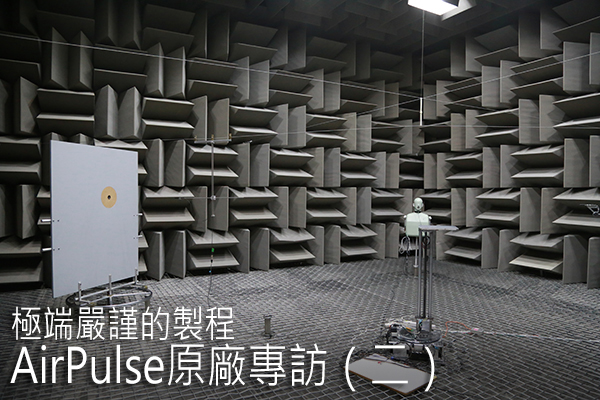
AirPulse原廠專訪(二)
將Hi-Fi平民化,AirPulse如何辦到?接下來就在AirPulse總經理馬強先生的帶領下,我們實地走訪生產線,看看這個兼具高產能、高效率、高技術且高環保的現代化工廠,是如何做出人人享受得起的Hi-Fi喇叭...feature-u--audio-com-tw.translate.goog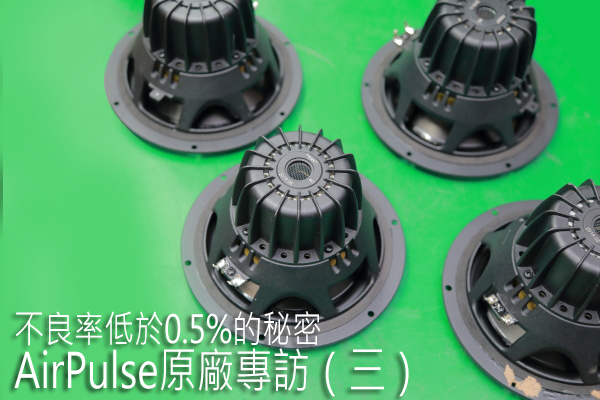
AirPulse原廠專訪(三)
在上個單元中主要談的是Edifier與AirPulse喇叭研發過程中的前期測試,藉以找到最適合的元件,這篇則將重點放在組裝、製造與品管,看看Edifier與AirPulse是如何年銷業界最高的800萬套以上產品,又能達到業界最低的0.5%不良率...feature-u--audio-com-tw.translate.goog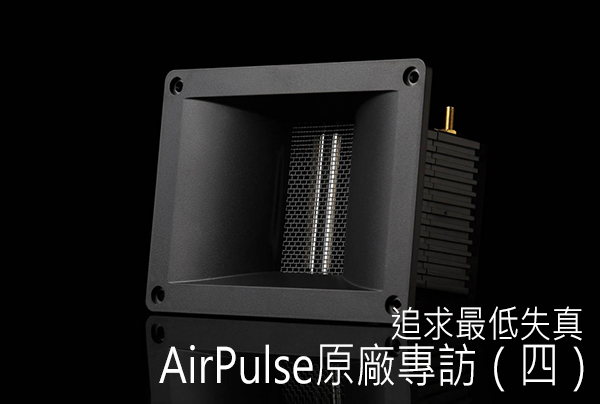
AirPulse原廠專訪(四)
AirPulse始於Edifier執行長張文東的一個理念:「將Hi-Fi平民化」,藉由與著名喇叭設計師Phil Jones合作,將Phil Jones在AAD時期所研發的經典產品下放,並透過Edifier的嚴謹製程與成熟技術做出接近Hi-Fi的聲音表現,還能超越Hi-Fi產品的...feature-u--audio-com-tw.translate.goog
First of all Airpulse lineup offers 95% of the sound of flagship Airpulse 7001 that costs 14.000 euros for a fraction of that.
Phil Jones is legendary speaker inventor and innovator that made the Airpulse 3.1 that is known as the best speaker in the last 100 years in Japan (275.000 dollars) - 360 degree sound : https://airpulsepro.com/about/timeline
Now they plan the Airpulse A800 that will do 180 degrees with 3 tweeters.
Now, the Airpulse lineup despite being made in Edifier factory - {that is very good at manufacturing (mechanical engineer not audio engineer) but not so good in designing and the biggest speaker company in China that normally produces cheap multimedia speakers} - has a completely different line of production inside the same factory where Phil Jones & the President of Edifier have a joint venture company called Platinum Audio Systems. So basically this is an audiophile lineup with completely different internal design, quality materials & electronics inside.
Proof:
Now more info:
- Airpulse uses under-hung woofers - 99% of speaker companies use cheaper overhung design.
Read : https://www.soundonsound.com/reviews/airpulse-a300
- The cabinets are braced inside
- True ribbon twitter 10 times thinner than human hair
- The Horn is designed to avoid reflections on the walls that is why vertically and horizontally is weaker, to be more precise, so this is not a flaw but it is a clear intention by design !
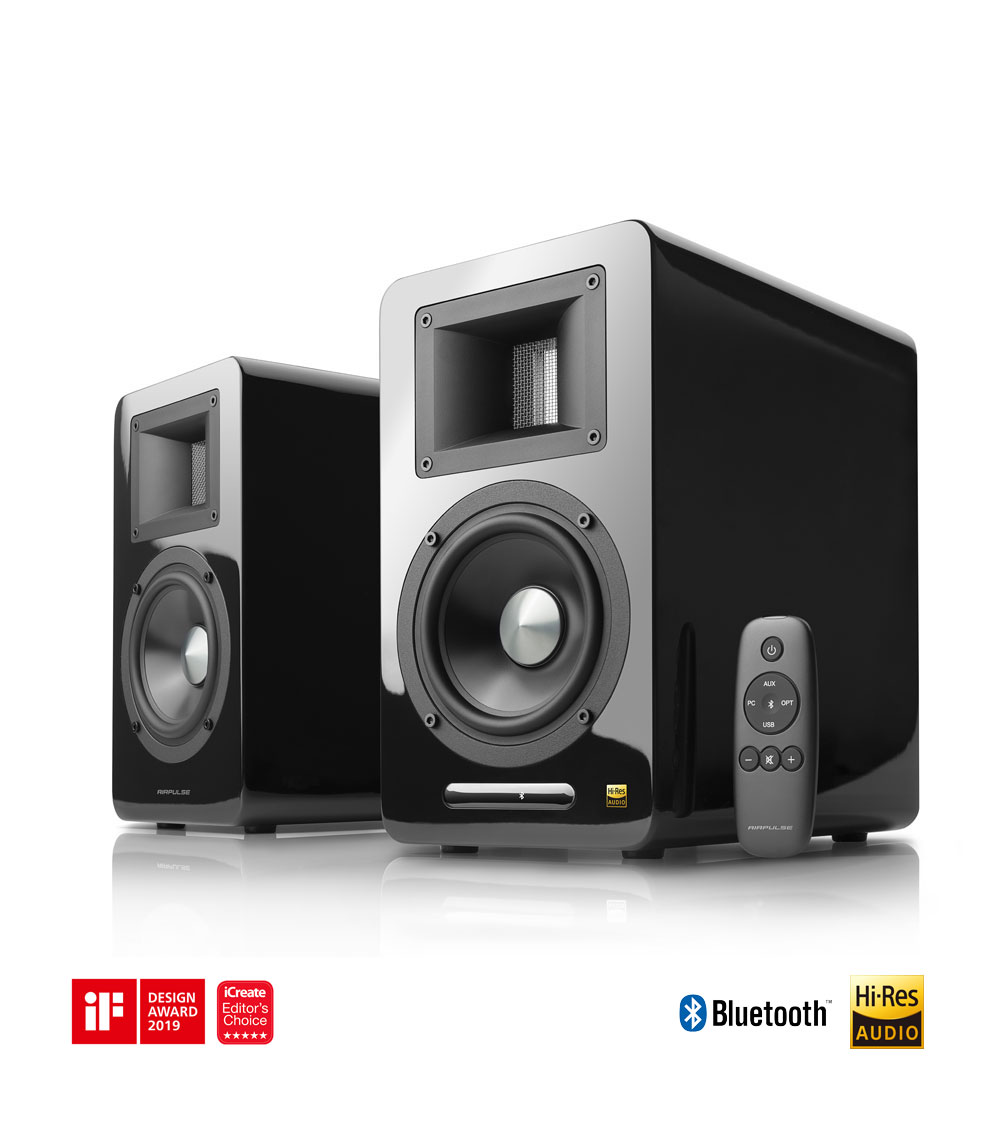
A100
Enter the world of superior audio performance with the Airpulse A100 Active Speaker System, the entr ...airpulsepro.com
- using Klippel Laser Interferometer :
- Uses internal Transparent cables : https://www.transparentcable.com/pages/how-audio-cables
- Best models are (A80/A100 - with subwoofer output sending everything below 80 Hz to sub and can be adjusted by crossover on the sub to even lower, A300 PRO ) ... while with the first model A200 (discontinued) the music style is too much american bass and A300 is under-powered and has a strange relaxed style that was fixed in A300 PRO)
From Phil Jones :
- I do not believe there is port resonating ( because it is oval in shape, maybe from the plastic material of the port ? ) and the cabinet has professional absorption material inside that should prevent cabinet resonating.
- I do not find them bright, but very clear and transparent and dynamic and i am not deaf)
- From what Hz are the sub-bass frequencies cut ?
Tear down :
Soomal - Airpulse A100 Active Speaker System: Teardown Gallery - Soomal.com
Soomal - Airpulse A100 Active Speaker System: Teardown Gallery Airpulse released a small bookshelf speaker, A100, after the highly praised A200, equipping new speaker units, smaller sized ribbon tweeters. Unlike A300, just an enlarged A200, A100 not only adopts high gloss piano enamel and...eng.soomal.com
Review page 1 : http://eng.soomal.com/edoc/10100000230.htm
Real-hearing experience page 2 : http://eng.soomal.com/edoc/10100000230.02.htm
It works with all Windows the driver.
If you want to keep your Airpulse A100 for 20 years, after you use it, you should close it from the button on the back (while it is opened - and you see the white led in front), not from remote, that way no electrical current will pass through it in standby mode ( it consumes 0.5W in standby ). When you re-open it from the back it will auto-come back to its USB mode (it remembers).
That way the capacitors and other components that have limited lifespan will not be used when you do not use the speakers !
I also recommend to keep the speakers at 0 treble and 0 bass adjustments (audiophile setting) because it is very correctly tunned at those values to show the music in the original form.
If you want a proper subwoofer for it - depending where you are - look for a SVS PB 2000 PRO that reaches 17 Hz at -3db so it should reach 20 Hz no problem. Connect the Airpulse A100 to the subwoofer with the LFE connection and try 80 Hz crossover and volume 15-20% on the sub-woofer.
The PB-2000 PRO has low distortions compared to PB-1000 PRO.

SVS PB-1000 Pro and SB-1000 Pro Subwoofers Review
SVS has totally redesigned their entry-level powered subwoofers in the PB-1000 Pro and SB-1000 Pro. Our review reveals these subs go well beyond entry-level performance. Read on to find out how.www.audioholics.com

SVS PB-2000 Pro Ported Subwoofer Review
SVS completely revamped their 2000 series with the release of their 2000 Pro subwoofers. We can report that the 2000 Pro subs are far more improved than just adding a smartphone app. Read on.www.audioholics.com
One more question, this speaker plays well all the way down to 70hz. I see a lot of different info about the crossover on the sub. Why put the sub at 80hz, when the speaker is already covering the 70-80hz area? There's no issue in having them overlap?

The above graphs show the corresponding total harmonic distortion to the long-term output graphs. Essentially, they depict how linear the subwoofer remains for the corresponding drive level seen in the long-term sweeps. The quantity being measured is how much of the subwoofer’s output is distortion and is shown here as a percentage. The measured performance here is fine, although SVS subs that I have tested in the past tended to have less distortion than what either of these subs could be pushed to. At nominal drive levels, distortion is very good and stays well below 5% above 20Hz on the PB-1000 Pro and 40Hz on the SB-1000 Pro. However, both subs can be pushed into pretty significant quantities of distortion at high drive levels. One interesting feature is that while the PB-1000 Pro has quite a bit more headroom than the SB-1000 Pro, it pays for that headroom with higher distortion levels. This leads me to guess that perhaps the upper bass headroom on the SB-1000 Pro may have been deliberately reduced to give it a cleaner sound for music, whereas the PB-1000 Pro was allowed as much output as could be had since it was more likely to used for film content where harmonic distortion isn’t as likely to be noticed in effects scenes such as explosions and earthquakes. The SB-1000 Pro can be pushed into a hefty level of distortion at lower frequencies, and that is expected since the entire onus of air displacement rests on a 12” driver with 13mm of Xmax, and that will reach its limits relatively early in deep bass below 30Hz.
These graphs neatly illustrate the difference - and advantage- of the heavier-duty driver in the PB-2000 Pro. For those who were thinking, “why get a 2000 Pro for mid-bass content when the 1000 Pros can get just as loud?” Well, here is your answer. The PB-2000 Pro can’t be pushed that far past 5% THD above 20Hz even at the absolute maximum drive level. The PB-1000 Pro, on the other hand, can be pushed past 20% THD in midbass frequencies. The PB-1000 Pro can get as loud as the PB-2000 Pro in mid-bass frequencies, but it isn’t as well behaved for the same loudness levels.
A very good question.
Watch all these :
The speakers must partially overlap with the sub-woofer to give the impression that the deep bass comes from the speakers themselves and not from the sub-woofer (which should not draw attention to it) !
You do that by using a combination of crossover and the volume setting.
As the bass from the speakers is getting fainter (reduced in volume) as the 5" woofer decreases in frequency, the subwoofer decreases the volume as the frequency rises and reaches the crossover point, so the two compensate each other and give the impression that it is a unitary whole.
-3dB at 62hz & -6dB at 57-58hz

So the Airpulse A100 below 70 Hz starts to drop in volume. And you need 10 Hz overlap where the sound is the same.
Since the Airpulse is stable (same volume) from 70 Hz to 80 Hz you will use the sub-woofer to overlap that section.
THX also recommends 80 Hz for crossover.
So you can start with 80 Hz and then try 70 Hz, if you consider that the speakers sound better with 70 Hz crossover do that It will obviously be less overlapping. When frequencies overlap their volume adds up and you get an increase in that specific region.
Someone told me, they didn't like when crossover was set to 60 Hz because it felt too disconnected and that more than 20% on a PB-1000 PRO was too loud in a 13-15 sqm room. It is good that you don't have to crack the sub-woofer volume too high because the PB-1000 PRO has lots of distortions at high volumes, unlike PB 2000 pro. And the SB-1000 Pro which has no port is much quieter on low notes compared to the PB version. So probably on the SB you can go slightly more than 20% before it becomes too loud.

Be sure to see 4 videos above, and position correctly the sub-woofer.
When will you get the sub-woofer to test ?
Did you also get an LFE cable to conect the Airpulse A100 to the SVS ?
Try 60, 65, 70, 75 , 80 Hz and read the conclusions of the SVS link in the previous post.
Please write back some feedback, i am curious what crossover you like more with the Airpulse A100 and what worked best
Thank you.
